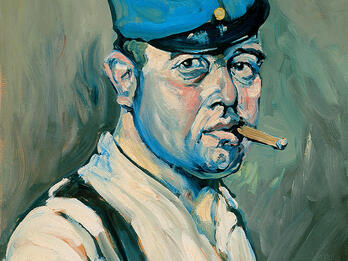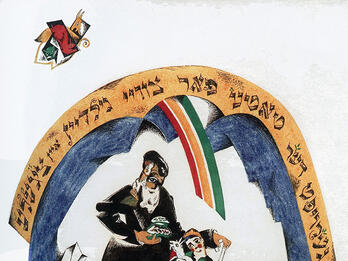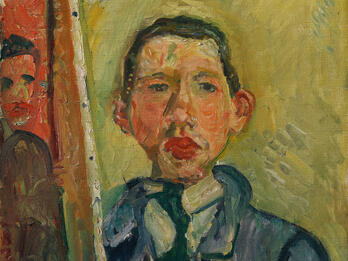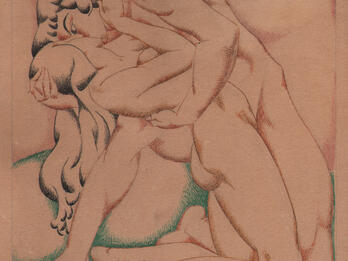Adam and Eve
David Yakerson
1918
David Yakerson’s Adam and Eve dates from a time before his turn to the much more abstract style of suprematism. In this illustration, Adam and Eve blend in with other decorative elements in a composition formed of sensuous flowing lines. The yellow of the sun and flowers recurs in many of his works of this period, dominating the palette of many of his paintings and drawings.
Credits
Published in: The Posen Library of Jewish Culture and Civilization, vol. 7.
You may also like

Self-Portrait with Soldier's Hat

Ḥad Gadya, Gekoyft der tate far tsvey gilden eyn tsigele (Father Bought a Kid for Two Zuzim)

Pogrom

Sleeping Beauty

Self-Portrait

Le Cantique des Cantiques (The Song of Songs)
Creator Bio
David Yakerson
Born in Vitebsk, David Yakerson joined the art world as a student at Yehudah Pen’s school in that city. He later studied at the Riga Polytechnic Institute and in Moscow. Between 1919 and 1922, Yakerson returned to Vitebsk to lead the sculpture department of the Vitebsk art academy where Kazimir Malevich was working out his suprematist principles. Deeply influenced by Malevich, Yakerson produced dozens of geometric suprematist prints in 1920, including his Fourteen Suprematist Studies. Yakerson is remembered for his UNOVIS cubo-suprematist sculptures—none of which are known to have survived—and as a teacher of Soviet avant-garde sculptors.
You may also like

Self-Portrait with Soldier's Hat

Ḥad Gadya, Gekoyft der tate far tsvey gilden eyn tsigele (Father Bought a Kid for Two Zuzim)

Pogrom

Sleeping Beauty

Self-Portrait



